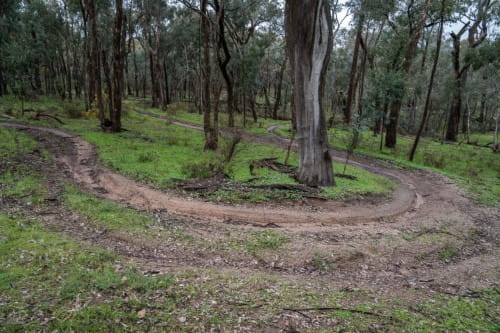How to care for nature in parks
When the sun begins to shine and the flowers bloom, it’s wonderful to get out and experience the wonders of Victoria’s diverse natural landscapes. As nature nourishes you on your next visit, consider how you can help promote biodiversity to ensure it is at its best.
Parks Victoria Area Chief Ranger Shipwreck Coast and Hinterland Michael Smith explains: “Visitors sometimes take actions they don’t realize can negatively impact the plants and animals in our incredible parks. Your actions can have a direct impact on nature and conservation.”
The survival of our wildlife, plants and natural habitats is critical to our own survival – our health and well-being, the air we breathe, the water we drink and the places we go. Here are some quick tips on how to be mindful of biodiversity when exploring nature.
Flower picking can affect important habitats
Spring flowers are beautiful, but please don’t pick them. Picking or cutting flowers can prevent the plant from setting seed. With over 1300 plant species listed as vulnerable in Victoria it is important that we help to conserve them.
“Picking flowers can be a big problem, especially when a species is threatened or endangered. If you damage the plant, you can severely impact the species’ chances of survival,” explains Area Chief Ranger Michael Smith.
Flowers are vital food sources for many insects and animals throughout Victoria. By removing flowers, you reduce their food supply and give critters and insects less opportunity for pollination.

Insects such as native bees depend on flowers as an important source of food.
Leave logs in parks to protect wildlife
Did you know that many animals rely on fallen wood and tree hollows for habitat? Crevices under logs and tree hollows provide safe habitats for mammals, reptiles, birds and invertebrates and are the perfect place to shelter their young from predators.
Fallen timber and tree hollows also have value far beyond simple protection, providing food resources and recycling nutrients in the ecosystem as it decays. People who take firewood take their homes for animals.
Logging and felling trees in protected areas is illegal. If you see someone removing wood, report this to Parks Victoria on 13 19 63.

Animals like the eastern pygmy possum rely on fallen logs to survive. Photo credit: Museums Victoria
Take photos on your phone
If you are in nature and notice a plant or animal, take a picture of it. By taking a photo on your smartphone and uploading it to Parks Victoria’s Citizen Science app, you can help collect important data that our scientists can use in planning conservation efforts.
By taking pictures, you can help increase our knowledge of the species that live in the park. They can even help identify a plant or animal that has never been recorded in that area before!
Learn more about Citizen Science.

Follow the path
“Following a trail is one of the best ways to take care of nature,” says Area Chief Ranger Michael Smith. “Trails are there so you can enjoy your time in nature without disturbing the incredible ecosystem around you.”
When hikers, bicycles and ATVs veer off the designated trails, it can disturb and destroy vegetation, leading to soil degradation and erosion in landscapes.


Image: Illegal wheeled (left) and four-wheel drive vehicles (right) can damage important habitats and plants, resulting in devastating impacts on our unique biodiversity.
Keep your dog on a leash
Dogs are not allowed in national parks, so leave your four-legged friend at home. Parks Victoria has a number of dog friendly parks, visit Dog Friendly Parks to plan your visit.
Your furry friend may be well trained, but off-leash dogs can impact important endangered species by disrupting important habitats. Dogs can leave an odor that deters wildlife from an area, leaving a lasting effect that can interfere with natural processes like reproduction and nesting. Even on a leash, dogs can startle and negatively affect prey such as birds and mammals.
“Endangered species like the plover rely on safe habitats in areas like beach dunes to breed safely. Even when leashed, dogs can risk vital breeding activities that are essential to the continued survival of a species,” explains Michael Smith.
Feeding wild animals can make them sick
You may think you’re helping, but feeding wildlife can have devastating consequences.
“Wild animals cannot digest food the way we can. Feeding animals food like processed seeds or bread can make them very uncomfortable,” explains Michael Smith.
Feeding wildlife can also affect an animal’s natural behavior. They can become aggressive and harass humans for food or lose their ability to forage for natural food sources.

What might be a fun experience for you can be extremely dangerous for species like the black swans pictured.
Keep clean
Waste can affect important habitats and landscapes in nature. Waste can travel or be mined, impacting marine life and waterways. Wherever you are, make sure you take your rubbish home with you.
To increase your impact, consider safely picking up any junk you notice in nature. You might even want to pick up on the popular trend of plogging. A combination of two words — “jogging” and the Swedish expression for picking it up, “plocka upp” — plogging is a popular activity where people pick up litter while moving.
Would you like to go one step further and take care of nature? Consider volunteering at your local park to support biodiversity.